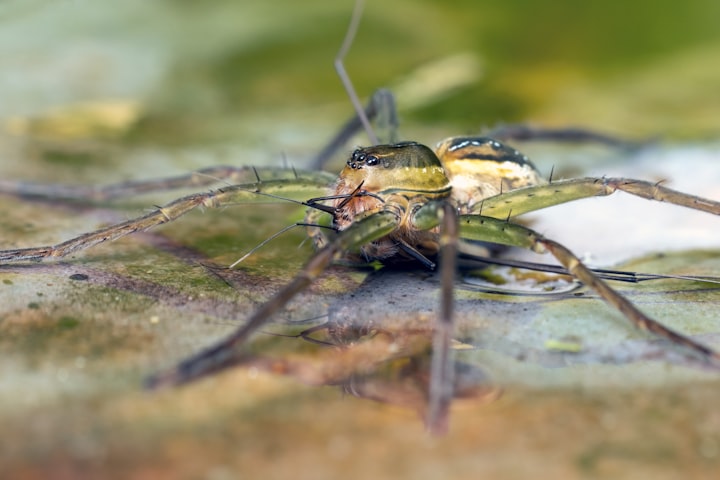Unveiling the Secrets of Australia's Giant Insects
What do you know about the insects

Australia and the Amazon rainforest are known for their abundance of enormous and eerie insects. What causes these regions to be hotspots for oversized creepy crawlies? While warmth certainly contributes to insect growth, it's not the sole factor at play. The key lies in their access to water. In tropical and subtropical environments, there is an abundance of moisture, providing a year-round supply of nourishment. The warm and wet conditions create the perfect environment for insects to feast and thrive, resulting in their impressive size.
In Australia, the quest for colossal insects often leads us to the equatorial regions, such as Central and Southern America, parts of Africa, Asia, and Northern Australia. Among these unique creatures is the wood moth, a rare sight due to its size. Recently spotted near a school in Australia, this wood moth holds the record for being the world's heaviest moth, boasting a wingspan of up to nine inches. Although Australia is home to approximately 60 species of wood moths, many do not reach the same colossal proportions as the giant wood moth.
Spiders, too, contribute to Australia's reputation for oversized arachnids. The warm climate and abundant food sources in the Australian bushlands create the perfect breeding ground for large spiders. The hot and humid conditions in Northern and Central Australia offer extended periods for spiders to grow before reproduction. Additionally, the vast bushlands provide ample insect prey, enabling spiders to grow larger and stronger. While their appearance may be intimidating, most Australian spiders are not harmful to humans.
Living alongside these gigantic spiders, Australians have developed a unique approach to coexisting with them. Despite the occasional spider bite, Australians recognize the importance of these creatures as irreplaceable components of the ecosystem. When encountering a spider at home, they prefer to call in the experts or brave individuals who can safely capture and release the spider back into the wild.
Australia's fascination with extraordinary creatures doesn't end with insects and spiders. The country is home to an array of peculiar animals, some of which may appear creepy or cool. Take, for instance, the hot pink slug. Found exclusively in Mount Kaputar National Park, this rare and endangered species exhibits a striking bright pink coloration believed to be an adaptation to its environment.
Australia also surprises us with its larger-than-life insect discoveries. Imagine mowing your lawn only to stumble upon a towering 14-inch insect or spotting a supposedly extinct Lord Howe Island stick insect, also known as the tree lobster, miraculously reemerging after nearly a century of being declared extinct. These remarkable creatures continue to captivate scientists and nature enthusiasts alike, showcasing the resilience and wonder of Australia's unique biodiversity.
Additionally, Australia is home to a variety of nocturnal animals, including the six-inch-long centipede, which can send shivers down anyone's spine. Another intriguing insect is the Australian walking stick. Its bizarre appearance makes it seem like a creature from a science fiction movie, yet it exists in nature, proving the astonishing diversity found within the animal kingdom.
Australian gardens are not exempt from peculiar encounters. The garden orb weaver spider, although it may appear intimidating, is harmless to humans and even beneficial. Its presence helps control insect pests, such as mosquitoes, while its intricate webs demonstrate the marvels of nature. Despite their initial intimidating appearance, these spiders often relocate if their webs are accidentally disturbed, allowing for peaceful cohabitation.
Australia's ecosystem showcases yet another remarkable creature—the burrowing cockroach. Unlike its flying counterparts, this wingless cockroach plays a vital role in the ecosystem by consuming fallen leaves and recycling organic matter. These fascinating creatures have even gained popularity as pets in Brisbane, highlighting the unique appreciation Australians have for their native wildlife.
Lastly, we must not overlook the incredible Hercules moth, known for its impressive size. With a wingspan of 11 inches, it holds the title of the largest moth in Australia. Its striking golden brown and white coloration, along with its transparent spots, make it a captivating sight. While the appearance between males and females is similar, the males possess longer and skinnier tails on their wings.
Encountering giant insects can be a memorable and awe-inspiring experience. Have you ever come across one of these extraordinary creatures? If so, we'd love to hear your story. Australia's diverse wildlife continues to astound and remind us of the remarkable wonders nature has to offer.
In conclusion, Australia's hotspots of insect activity can be attributed to a combination of warm climates, ample water supply, and abundant food sources. These factors contribute to the growth and development of oversized insects, creating a unique ecosystem that fascinates both locals and visitors alike. The coexistence between Australians and these remarkable creatures highlights the country's appreciation for its extraordinary biodiversity. So, next time you find yourself face to face with an Australian insect marvel, remember to embrace the awe-inspiring wonders of nature.






Comments
Divine Dawn is not accepting comments at the moment
Want to show your support? Send them a one-off tip.